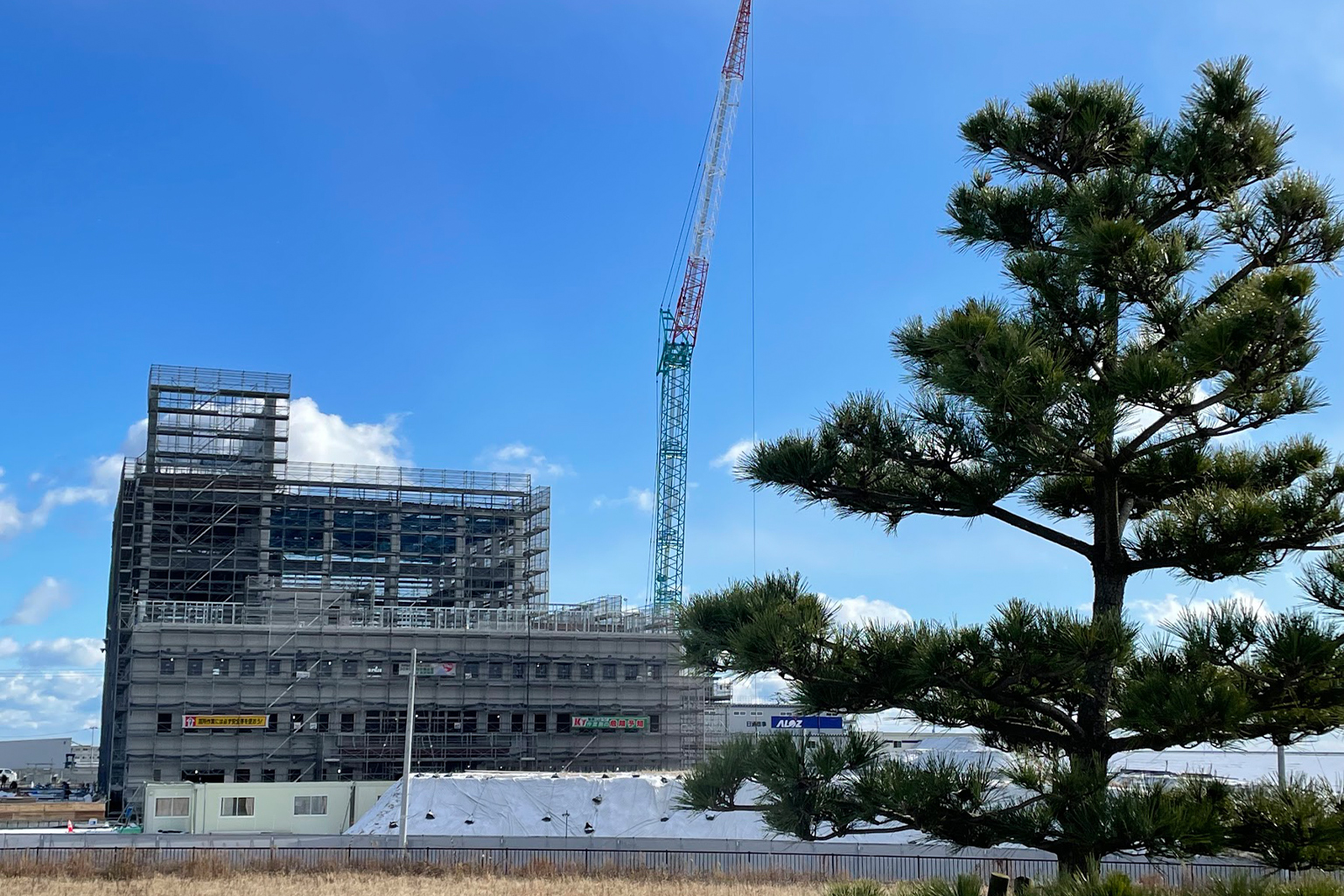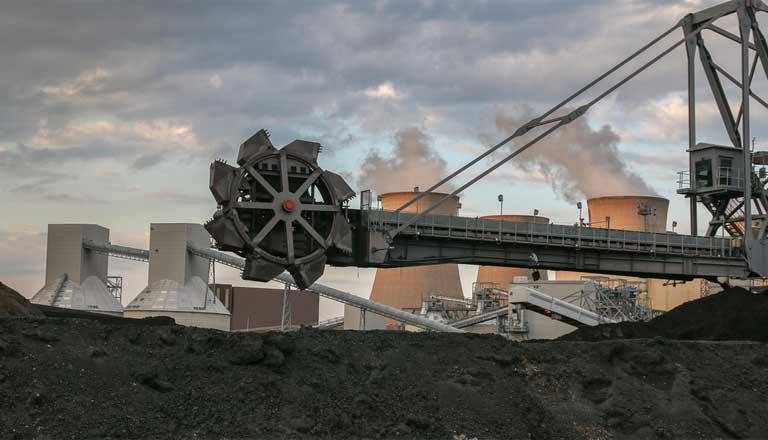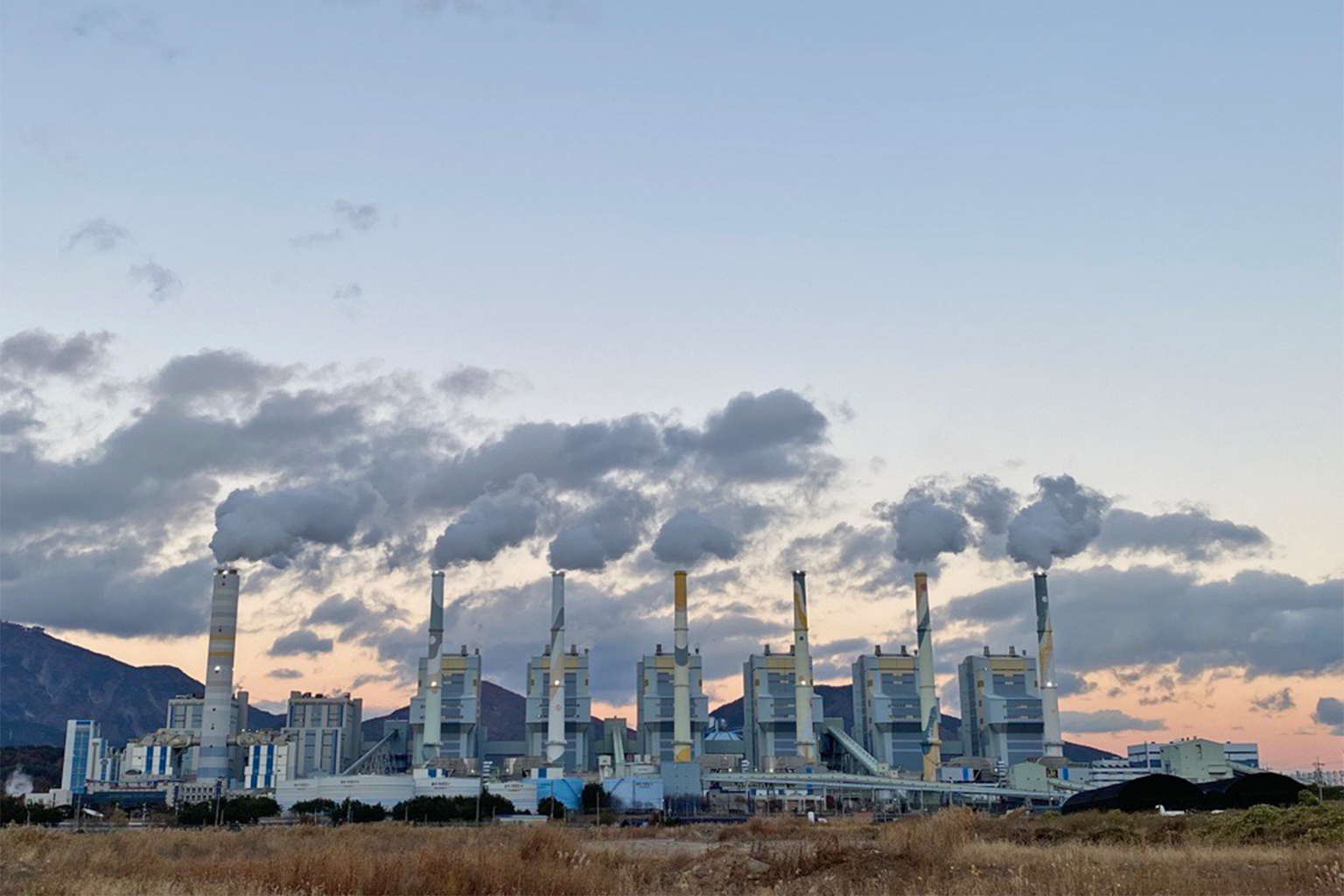- In 2021, Japan and South Korea imported a combined 6 million metric tons of wood pellets for what proponents claim is carbon-neutral energy.
- Large subsidies for biomass have led Japan to import massive amounts of wood pellets from Vietnam and Canada; two pellet giants, Drax and Enviva, are now eyeing Japan for growth, even as the country may be cooling to the industry.
- South Korea imports most of its pellets from Vietnamese acacia plantations, which environmentalists fear may eventually pressure natural forests; South Korea wants to grow its native production sixfold, including logging areas with high conservation value.
- Vietnam may soon follow Japan and South Korea’s path as it phases out coal, and experts fear all this could add massive pressure on Southeast Asian forests, which are already among the most endangered in the world.
This is part two of a two part series on the Asian biomass expansion. Part one can be found here.
Under the guise of “carbon neutral” energy, Japan and South Korea’s appetite for woody biomass for electricity generation has increased exponentially over the past decade and continues to grow. The two nations’ biomass subsidies are spurring an increase in the production of wood for burning in Southeast Asia and North America, putting pressure on forests in those regions.
Burning woody biomass for electricity takes stored CO2 out of trees and puts it back into the atmosphere. However, United Nations carbon accounting rules define burning woody biomass as carbon neutral because newly planted trees absorb CO2. As a result, neither Japan nor South Korea counts that CO2 among its emissions, despite the fact that numerous studies have challenged industry claims of biomass burning’s carbon neutrality.
In 2021, Japan and South Korea imported a combined 6 million metric tons of wood pellets, according to data compiled by the nonprofits Biomass Industry Society Network (BIN) and Solutions for Our Climate (SFOC). They both also import palm kernel shells, a byproduct of palm oil production. A smaller percentage of both countries’ biomass fuel, including wood chips, is sourced domestically.
Encouraged by generous subsidies and the long-standing carbon accounting loophole, wood pellet demand in Japan and South Korea is expected to rival that of the United Kingdom and European Union by 2027. The EU currently supplies 60% of its supposedly renewable energy through biomass.
Although Asian woody biomass sourcing is just one production demand being made on the world’s forestry industry (wood for pulp, paper and construction are others), experts warn that a surge in biomass production could lead to increased deforestation — for a fuel that, no matter what the carbon accounting rules say, emits higher levels of CO2 at the smokestack than even coal and large amounts of particulate air pollution.

Biomass in Japan: Ideally, locally sourced — in reality, dominated by imports
A country covered almost 70% in forest, Japan’s current energy plan asserts that biomass has “diverse values as a locally distributed, locally produced, locally consumed energy source.”
The government’s feed-in tariff (FIT) scheme, a renewable energy subsidy introduced in 2012, incentivized larger-scale biomass power plants and co-firing of coal with biomass (where coal-fired plants are made “cleaner” by substituting a small percentage of the coal with wood chips). Demand for wood has exploded since then, with primary fuels being wood chips and pellets, and palm kernel shells.
Wood chips are sourced largely from Japan’s domestic forestry sector. Domestic timber sourced for biomass comes from thinning and forest residues, including tree tops and other timber waste; the majority is sourced from tree plantations. Quantities of chips produced from these sources increased from roughly 750,000 metric tons in 2012 (the year the FIT was introduced), to 8.6 million metric tons in 2020, according to government statistics on wood chip for energy usage.
Japan imports all of its palm kernel shells, a leftover after the oil is processed. Oil palm plantations have been blamed for massive deforestation across Southeast Asia, and especially in Malaysia and Indonesia, for decades. In 2021, Japan sourced 4.3 million metric tons of shells from Malaysia and Indonesia.
“Japan has used a lot of palm kernel shells up to now, because they are cheap, but there’s not a huge supply of those either, so [power plants] turned more and more to pellet imports,” said Miyuki Tomari, BIN’s chairperson.
Of the three fuels, imported wood pellets are expected to see the greatest increase. By 2019, more than 90% of Japan’s wood pellets came from overseas. “There’s no way domestic wood can meet the demand,” Tomari said.
The majority is currently sourced from Vietnam (roughly 53%) and British Columbia, Canada (roughly 34%), according to government trade statistics for 2021. Last year saw a total of 3.1 million metric tons of wood pellets enter the country.

“Waste wood and wood byproducts used to produce primarily heat at the local level is how biomass should be used. All woody biomass imports fail to accomplish that,” while producing unacceptable levels of carbon emissions, Tomari said. She cited research by Mitsubishi UFJ Research & Consulting that found wood pellet and chip imports into Japan emit enough CO2 from processing and shipping to be incompatible with the U.N.’s goal of keeping global warming to 1.5° Celsius (2.7° Fahrenheit) to avoid “dangerous to catastrophic climate changes.”
Tomari described Japan as “easy prey” for overseas pellet producers after hearing a biomass consultant at a 2015 industry conference refer to the Asian nation as a biomass “Shangri-la” due to its significant government subsidy, put in place after the 2011 Fukushima nuclear disaster.
Two of the world’s largest pellet producers have set their sights on Japan: Drax and Enviva.
Drax, a major U.K. power company and wood pellet producer, has acquired two Canadian pellet producers, Pacific BioEnergy and Pinnacle Renewable Energy, in British Columbia. Pellet companies have received the BC authorities’ blessing, according to Roger Smith from the environmental advocacy NGO Mighty Earth. In his view, the BC provincial government is looking to generate revenue from a new “bio-economy,” especially because trees lacking commercial value as timber can still be cut and made into pellets.
“But I think they are underselling the environmental and other values of these [Canadian] ecosystems,” Smith said, adding that local environmentalists are fighting to protect BC’s boreal forests and inland temperate rainforests. “That’s exactly where all these pellet plants have popped up. And what markets are they serving? Well, increasingly, East Asia.”

Although Drax did not respond to a request for comment, a December 2021 press release quoted CEO Will Gardiner as saying that Drax has a “commitment to the growth of sustainable biomass in Japan specifically, where we expect to establish a new office in 2022.”
U.S. pellet producer Enviva is also ramping up business with Japan.
Although shipments from Enviva only began in January 2021, the company said at that time it had contracts in place to provide Japan with 3 million metric tons of pellets every year, an amount equivalent to Japan’s total pellet imports in 2021. Major Japanese trading houses, such as the Sumitomo Corporation and Mitsubishi Corporation, are among those signing 10- to 15-year contracts with Enviva. Although Enviva claims to have a clean environmental record, forest advocates, including the nonprofit Dogwood Alliance, have documented otherwise.

Enviva, with pellet plants dotted across the southeastern U.S., has historically provided biomass to the U.K. and Europe. However, investor documents state that roughly half the company’s business will be with Japanese clients by 2025. The company expects total pellet production to increase from roughly 6 million metric tons to 10 million metric tons in that period.
In March 2022, a study commissioned by the Southern Environmental Law Center claimed that hardwood (i.e. natural) forests experienced a net loss after Enviva began operating in Virginia and North Carolina. This contradicts the company’s own claim that forest inventory continues to increase where it operates. The study noted that the net loss was “likely reducing carbon stocks in forests” around three surveyed plants, out of Enviva’s 10 total plants. “Southern hardwood forests,” the study said, “store vast amounts of carbon, and logging them releases heat-trapping gas into the atmosphere, worsening the climate crisis.”
Enviva is building at least three new pellet plants in Mississippi and Alabama, to service customers in “Europe and Asia.” The company, which has already established a Tokyo office, did not respond to a request for comment.
Although pellet producers appear optimistic about future market growth in Japan, there are signs the Japanese government is no longer as enthusiastic about woody biomass imports as it once was.
In 2018, the government excluded new co-fired projects (combining coal with biomass) from subsidies. Currently, biomass represents a little over 4% of Japan’s total electricity generation, a figure the country aims to increase to 5% by 2030, according to its latest energy plan. That’s roughly 14% of Japan’s so-called renewable energy target for that year — hardly comparable to the EU, where biomass already constitutes 60% of so-called renewables.

In April 2022, at the prompting of its biomass sustainability working group, the Japanese government introduced a mandatory greenhouse life cycle assessment (LCA) standard for all new biomass plants (still excluding, however, emissions at the smokestack). New biomass projects seeking a government subsidy are now required to prove a 50% life cycle emission reduction compared with average fossil fuel emissions up to 2030, and a 70% reduction from 2030 on.
However, power plant projects already certified under the government’s subsidy scheme, including those currently under construction, are exempt from making reductions, though they will still have to disclose life cycle emissions — such as those from manufacturing and transportation — for their biomass power generation.
“I think we’re going to see some places that haven’t actually lowered their emissions,” Seiji Hashimoto, a professor at Ritsumeikan University and a member of the Japan’s biomass working group, told Mongabay in an interview. “It’s possible that they will lose legitimacy.”
Pellets sourced from North America will have the most difficulty meeting the LCA standard, due to greenhouse gases generated by shipping them across the Pacific Ocean.
“With the LCA standard going into effect, I think the number of new projects that can meet it is probably going to fall,” Hashimoto added.
It remains to be seen, however, if or when the new LCA requirement will have a significant impact on Japan’s biomass electricity generation. With contracts for millions of tons of pellets locked in, and Japan pledging to hit net-zero emissions by 2050, LCA could be too little regulation, too late to curb environmental harm.

South Korea: Expanding domestic logging for biomass
South Korea’s dependence on woody biomass followed a trajectory similar to Japan’s. Burning wood for electricity, especially when co-fired with coal, took off in 2012 with the introduction of the nation’s renewable energy portfolio standard, which includes biomass subsidies.
In 2020, the country generated 19% of its renewable electricity from solid biomass, 70% of which came from wood pellets, according to environmental nonprofit SFOC. Most of the remaining solid biomass was palm kernel shells. In 2020, only 6% of South Korea’s total energy was generated by renewables.
In 2021, the country imported 3.1 million metric tons of wood pellets, mainly from Vietnam (1.9 million metric tons), according to customs office data compiled for SFOC. Domestic supply provided a further 658,000 metric tons of pellets, or 17% of total consumption.
South Korean demand is the major driving force behind Vietnam’s wood pellet industry. The 1.9 million metric tons that Vietnam exported to South Korea last year accounted for 60% of its total production, according to statistics by South Korea’s Customs Office and the International Trade Centre.
The industry, which is concentrated in Vietnam’s central and northern regions, was virtually nonexistent in 2012. But that quickly changed with South Korean and Japanese demand. So far, wood pellets haven’t threatened Vietnam’s natural forests, thanks to a strict government logging ban. However, Tô Xuân Phúc, a Forest Trends senior policy analyst, said pellets might include high-risk tropical timber acquired as waste wood after it enters and is processed in the country. Still, he said he doesn’t see a clear link between deforestation and Vietnam’s pellet industry at this time.

At present, Vietnam’s biomass industry is almost wholly focused on acacia plantations. Companies and small-scale landholders raise the fast-growing plant to turn a quick — and, for the smallholders, much-needed — profit, according to Phúc. Acacia now makes up 80% of Vietnam’s domestic timber production.
South Korea’s domestic pellet production is sharply rising as well. According to SFOC, the Korea Forest Service plans to increase overall domestic wood biomass production sixfold by 2050. That would expand 2020’s 500,000 metric tons of domestic wood biomass to 3 million tons.*
The Korea Forest Service’s plan is to establish “intensive forest management areas” for logging, according to Soojin Kim, a former senior researcher at SFOC. “But we know that, according to the Ministry of Environment, high conservation value areas are overlapping with the intensive forest logging areas,” Kim said.
To spur domestic production, the South Korean government is pressuring power producers to stop receiving imports of woody biomass — or, at least, subsidized imports — by 2025, and even making the firms sign memorandums of understanding to that effect, according to Kim.
“There have been massive amounts of logging going on in the last few years domestically, because the [forestry] industry sees this as an opportunity to make money,” Kim said, adding that the industry is targeting trees planted in the 1970s and ’80s, during South Korea’s period of economic development, which are now coming to maturity.
“But, also, [the Korea Forest Service] wanted to show their leadership on reducing greenhouse gas emissions and increasing carbon sequestration from the [forestry] sector. And they see that biomass is the biggest opportunity [to get that done],” Kim said.
Representatives from the South Korean government did not respond to a request for comment.

Is Vietnam next for a biomass boom?
As Vietnam looks to phase out coal, it could follow a similar path as South Korea and Japan, building power plants to burn biomass for energy. South Korean and Japanese companies are already starting to invest in biomass power generation in Vietnam.
The industry appears to be speeding ahead much faster than the understanding of wood’s shortcomings as a fuel — to say nothing of policy and regulation. “In Vietnam,” Phúc noted in an email to Mongabay, “there has [been] no debate about the linkage between wood pellets and carbon neutrality yet.”
With ever-increasing demand for biomass, a product competing for limited resources with Vietnam’s other forest products, Phúc predicts stiff competition for timber.
Vietnam’s natural forests could be in danger, he said, especially “in the future, if you have the companies demanding a huge volume of timber for production.”
Banner image: Wood chips for biomass burning at Tofte, Norway. Image by Statkraft via Flickr (CC BY-NC-ND 2.0).
Annelise Giseburt is a freelance reporter based in Tokyo.
Citations:
Schlesinger, W. H. (2018). Are wood pellets a green fuel? Science, 359(6382), 1328-1329. doi:10.1126/science.aat2305
Xu, Y., & Ramanathan, V. (2017). Well below 2°C: Mitigation strategies for avoiding dangerous to catastrophic climate changes. Proceedings of the National Academy of Sciences, 114(39), 10315-10323. doi:10.1073/pnas.1618481114
Related audio from Mongabay’s podcast: Even degraded forests are more ecologically valuable than none, listen here:
Correction: This story originally reported that “According to SFOC, the Korea Forest Service plans to increase domestic production tenfold by 2030,” totaling “6.58 million tons.” That has been corrected to read: “increase domestic production by sixfold by 2030. That would expand 2020’s 500,000 metric tons of domestic wood biomass to 3 million tons.”
FEEDBACK: Use this form to send a message to the author of this post. If you want to post a public comment, you can do that at the bottom of the page.
